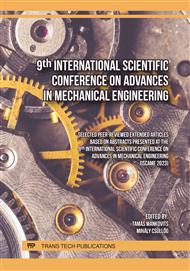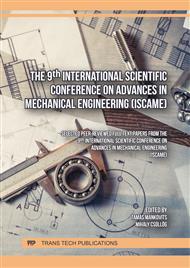[1]
M. de Saint-Venant, Mémoire sur la torsion des prismes, Mémoires présetés par divers savants à l'Académie des sciences, Sciences Mathématiques et Physiques 14 (1856) 233-560.
DOI: 10.3406/marb.1856.1646
Google Scholar
[2]
S.G. Lekhnitskii, Torsion of Anisotropic and Non-homogeneous Bars, Izd. Nauka, Fiz-Mat. Literatura (in Russian), Moscow, 1971.
Google Scholar
[3]
I.S. Sokolnikoff, Mathematical Theory of Elasticity, McGraw-Hill, New York, 1956.
Google Scholar
[4]
S. Timoshenko, J. N. Goodier, Theory of Eladticity, McGraw-Hill, New York, 1969.
Google Scholar
[5]
L. Prandtl, Zur Torsion von prismatische Stäben, Physikalische Zeitschrift, 4 (1903), S. 758.
Google Scholar
[6]
L. Prandtl, Eine neue Darstellung der Torsionspannungen bei prismatischen Stäben von beliebigem Querschnitt, Jahresbericht der deutschen Mathematiker-Vereinigung, 18(1904), S. 31.
DOI: 10.1007/978-3-662-11836-8_5
Google Scholar
[7]
A.I. Lurie, Theory of Elasticity, Springer, Berlin, 2005.
Google Scholar
[8]
M. Marin, G. Stan, Torsion of a bar with conic cross section, Nonlinear Studies, 14(3) (2007) 281-288.
Google Scholar
[9]
F. Grasshof, Elastizität und Festigkeit, second ed., Berlin, 1878.
Google Scholar
[10]
R. Barretta, A. Barretta, Shear stresses in elastic beams: an intrinsic approach, European Journal of Mechanics A / Solids, 29 (2010) 400-409.
DOI: 10.1016/j.euromechsol.2009.10.008
Google Scholar
[11]
Z. Bai, R.T. Shield, Identities for Torsion of Cylinders, Journal of Applied Mechanics, 61(2) (1994) 499-500.
DOI: 10.1115/1.2901483
Google Scholar



